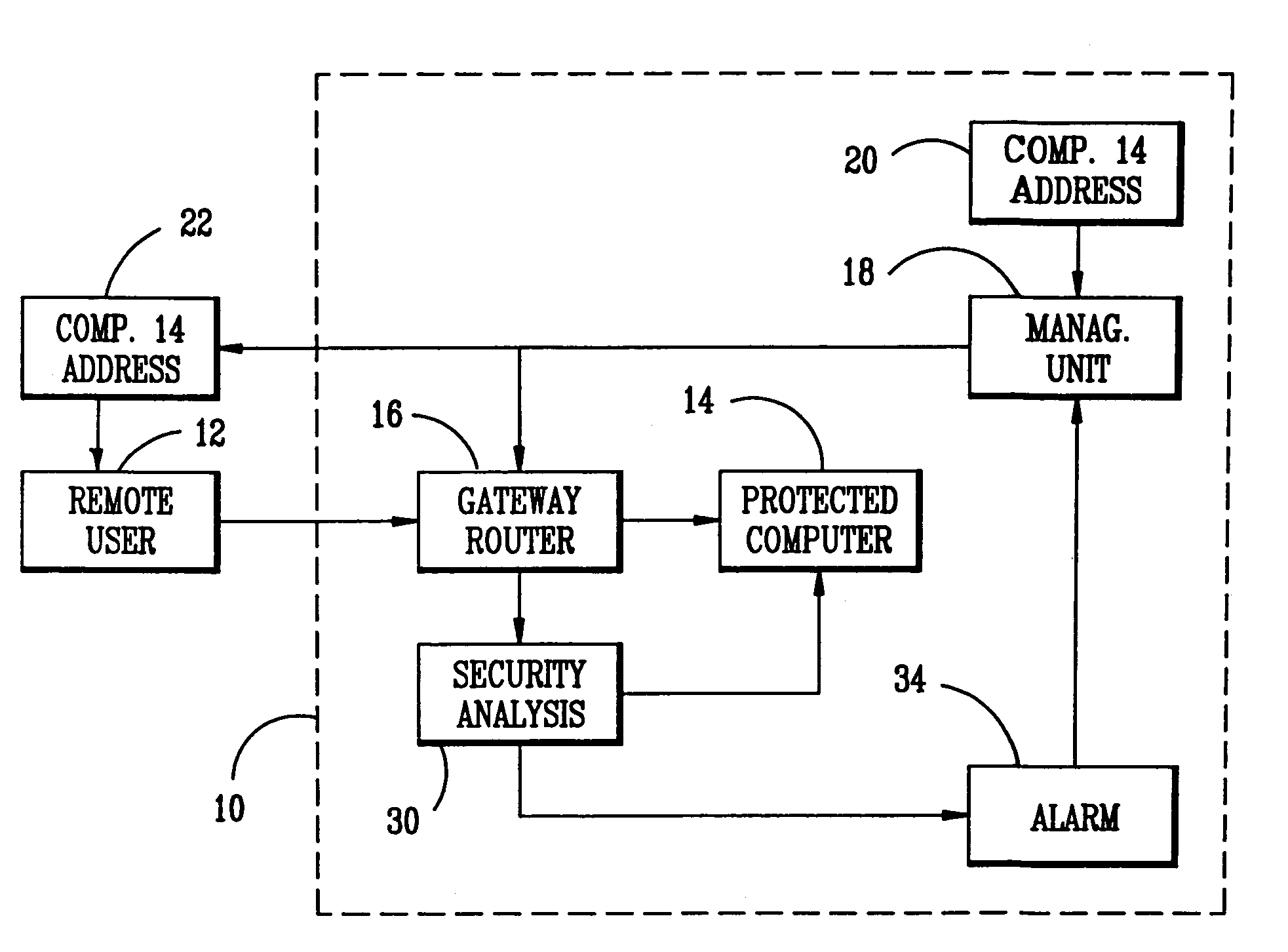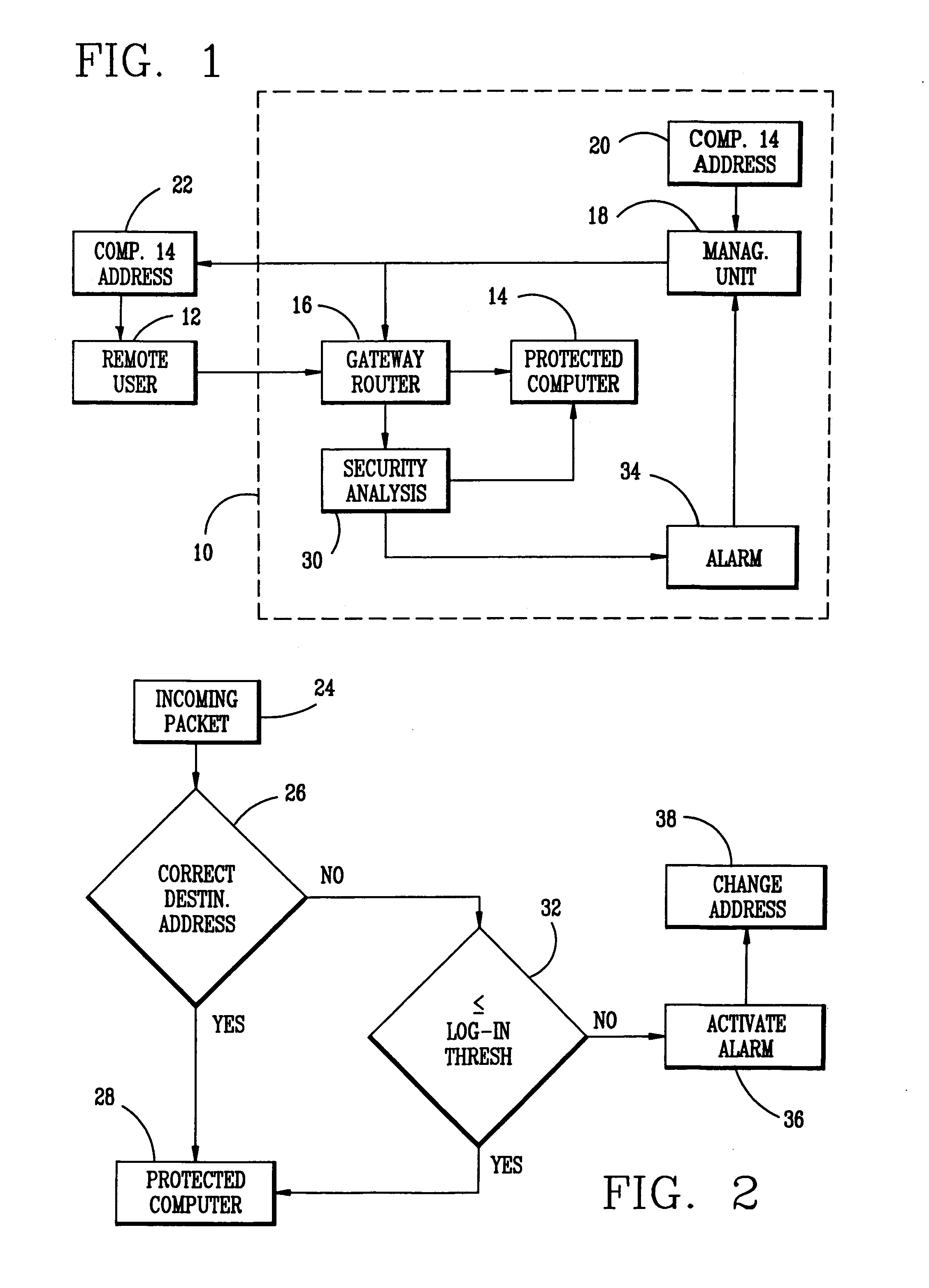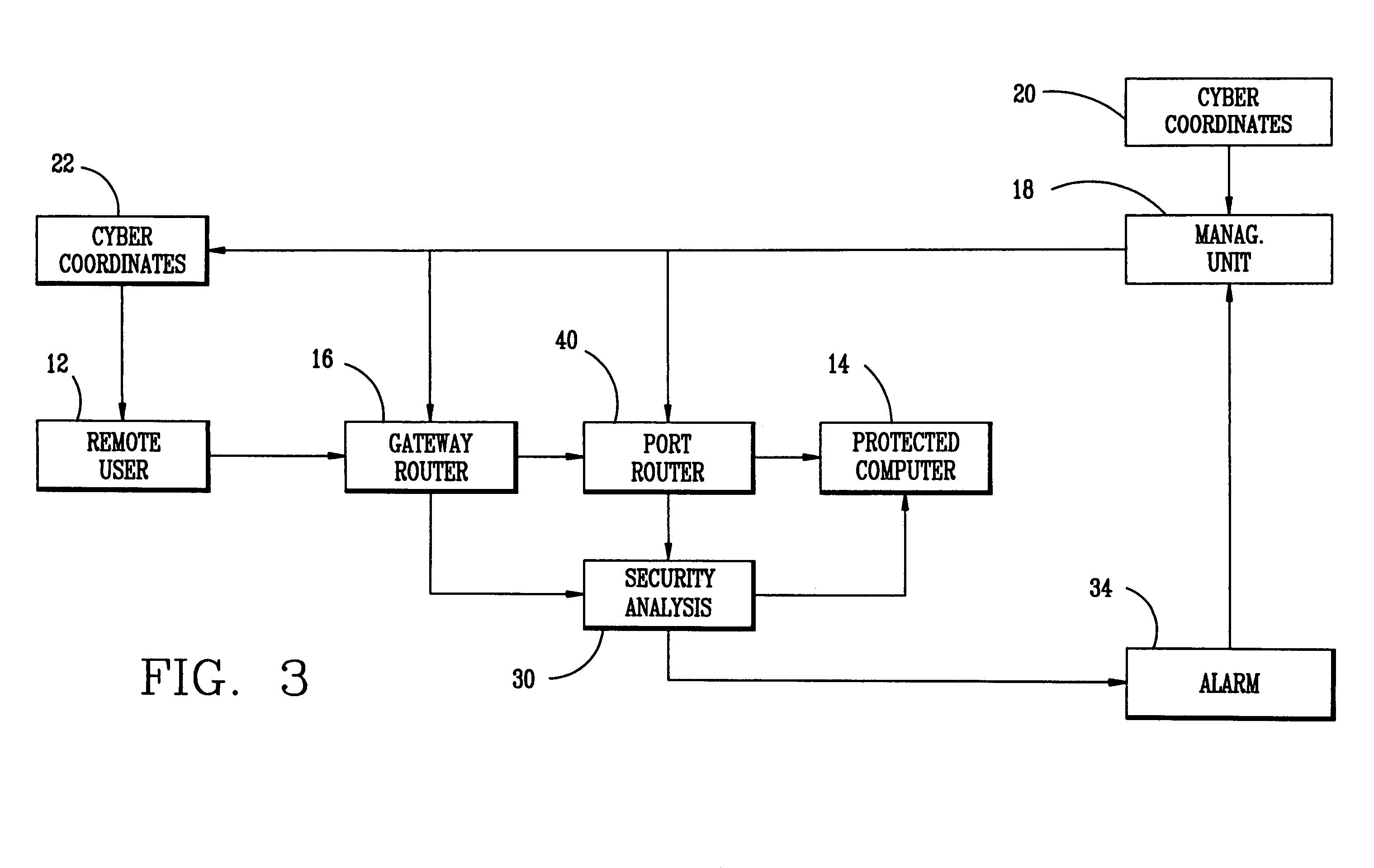Method of communications and communication network intrusion protection methods and intrusion attempt detection system
a technology of communication network and detection system, applied in the field of communication network intrusion protection methods and intrusion attempt detection system, can solve the problems of a large percentage of users, a serious threat to the integrity of national critical infrastructure, and the inability to address potential cyber attacks, etc., and achieve the effect of streamlining communications, ensuring security, and ensuring security
- Summary
- Abstract
- Description
- Claims
- Application Information
AI Technical Summary
Benefits of technology
Problems solved by technology
Method used
Image
Examples
Embodiment Construction
[0025]Existing communications systems use fixed coordinates in cyber space for the communications source and communications receiver. Commonly accepted terminology for the Internet refers to these cyber coordinates as source and destination IP addresses. For purposes of an unauthorized intrusion into these communication systems, the situation of a cyber attack might be described in military terms as shooting at a stationary target positioned at known coordinates in cyber space. Obviously, a moving target is more secure than the stationary one, and a moving target with coordinates unknown to the intruder is more secure yet. The method of the present invention takes advantage of the cyber space environment and the fact that the correlation between the physical coordinates of computers or other communication devices and their cyber coordinates is insignificant.
[0026]While it is difficult to change the physical coordinates of computers or other communications devices, their cyber coordi...
PUM
 Login to View More
Login to View More Abstract
Description
Claims
Application Information
 Login to View More
Login to View More - R&D
- Intellectual Property
- Life Sciences
- Materials
- Tech Scout
- Unparalleled Data Quality
- Higher Quality Content
- 60% Fewer Hallucinations
Browse by: Latest US Patents, China's latest patents, Technical Efficacy Thesaurus, Application Domain, Technology Topic, Popular Technical Reports.
© 2025 PatSnap. All rights reserved.Legal|Privacy policy|Modern Slavery Act Transparency Statement|Sitemap|About US| Contact US: help@patsnap.com



